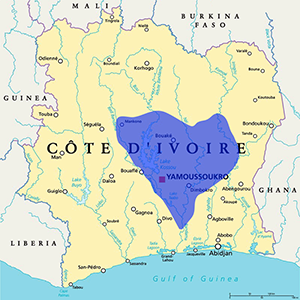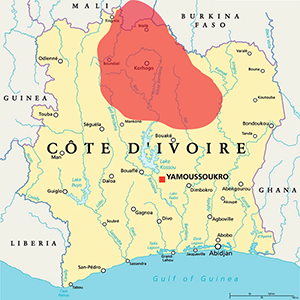Northeast Ivory Coast
Dyula
The Dyula people are part of the larger Mande ethnic group that live throughout West Africa. Their culture connects to many other groups, as demonstrated in the diversity of their art, politics, economy, and religion. In Ivory Coast, Dyula artists are most famous for their weaving and dying, though they also create metalwork and pottery. Politically, Dyula communities have both hierarchical and communal elements. Dyula society is traditionally structured around merchant guilds, with influential families holding considerable power. At the same time, Dyula communities also value communal decision-making and consensus-building. Economically, Dyula communities rely on their extensive trade networks, which fosters interdependence with neighboring societies. Religiously, Dyula communities are primarily Muslim, though many art forms still contain elements of pre-Islamic spirituality.
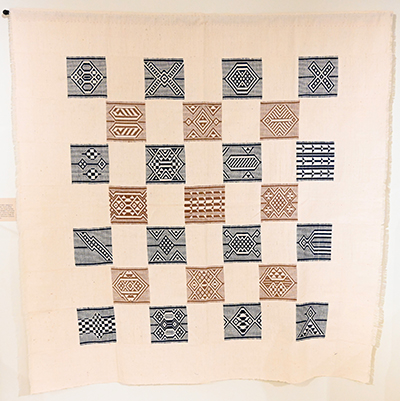
Textile
#1998.04.E.44 ● Curated by Charlotte Armstrong
This cloth, made of cotton, features a variety of geometric designs in mud brown and indigo blue dyed thread. Traditionally, Dyula artists weave strips of cloth on small looms, combine them into large textiles, and then sell them to their Senufo neighbors, so the designs must cater to their taste. This textile was created in the prominent weaving village of Waraniene and was judged by African art expert Jerome Vogel as one of the best local examples. Dyula, Senufo, and American cultures all came together to judge this cloth as fit to be seen.
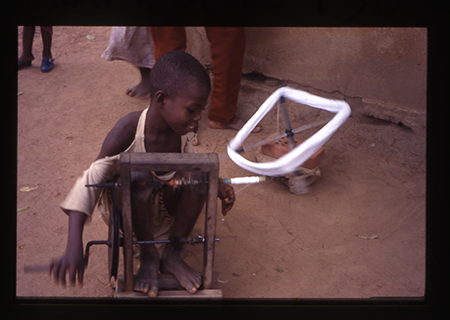
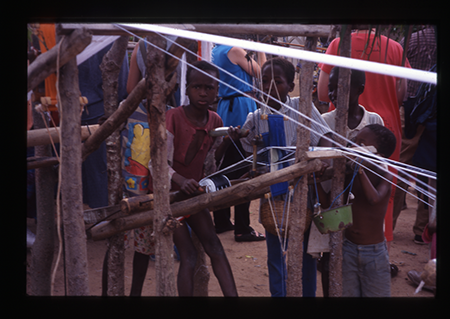
In 2023, traditional weaving from the Ivory Coast was inscribed on the UNESCO Representative List of the Intangible Cultural Heritage of Humanity. This honor extends to the entire craft of weaving, including making the custom looms and preparing the raw materials.
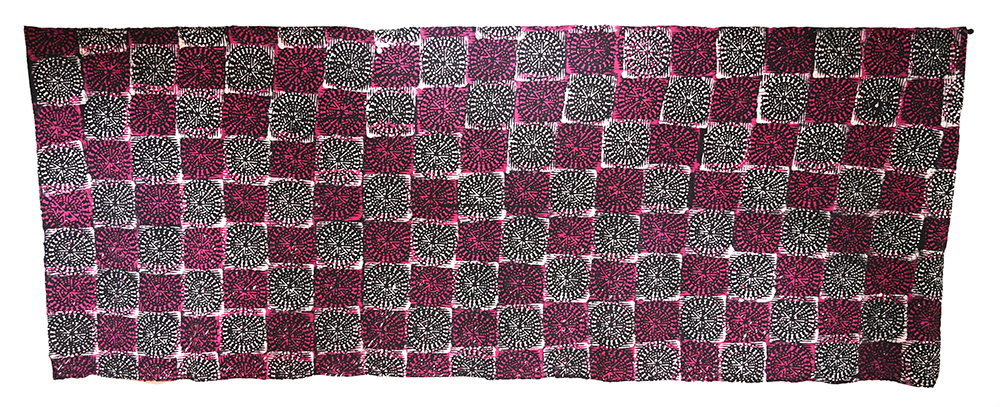
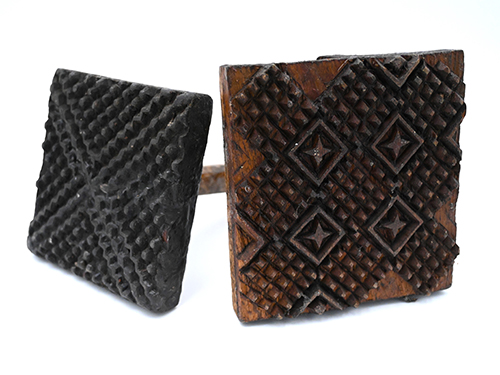
Textile & Stamps
#1998.04.E.24-26 ● Curated by Yushuo Wang
Dyula artists added colorful designs to this textile using stamps and a resist-dying technique. The finished form looks like a single pattern, but it was actually created in two phases. The wheel-like designs were created by coating a stamp in wax and then applying it to the fabric. Everywhere the wax touched was protected and stayed white when black dye was added. In the second phase, alternating wax squares were applied over the designs. Red dye only adhered to the unwaxed portions, allowing the checkerboard effect to be seen.
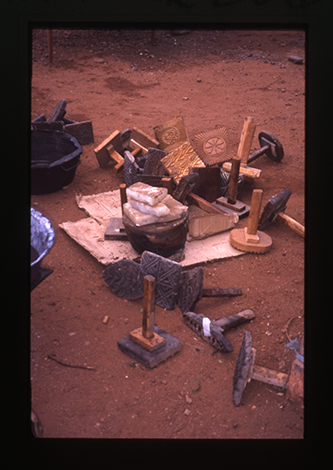
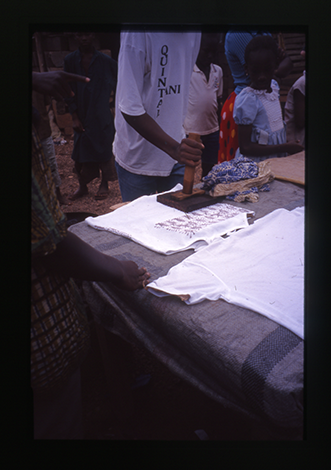
Anything could be used to stamp wax onto fabric. However, Ivory Coast artists typically use square stamps to standardize the manufacturing process. By using similarly sized stamps, artists can quickly apply a complex design to a huge area. They can also tweak designs by rotating stamps or only partially pressing down.
Explore the other sections of this exhibit
